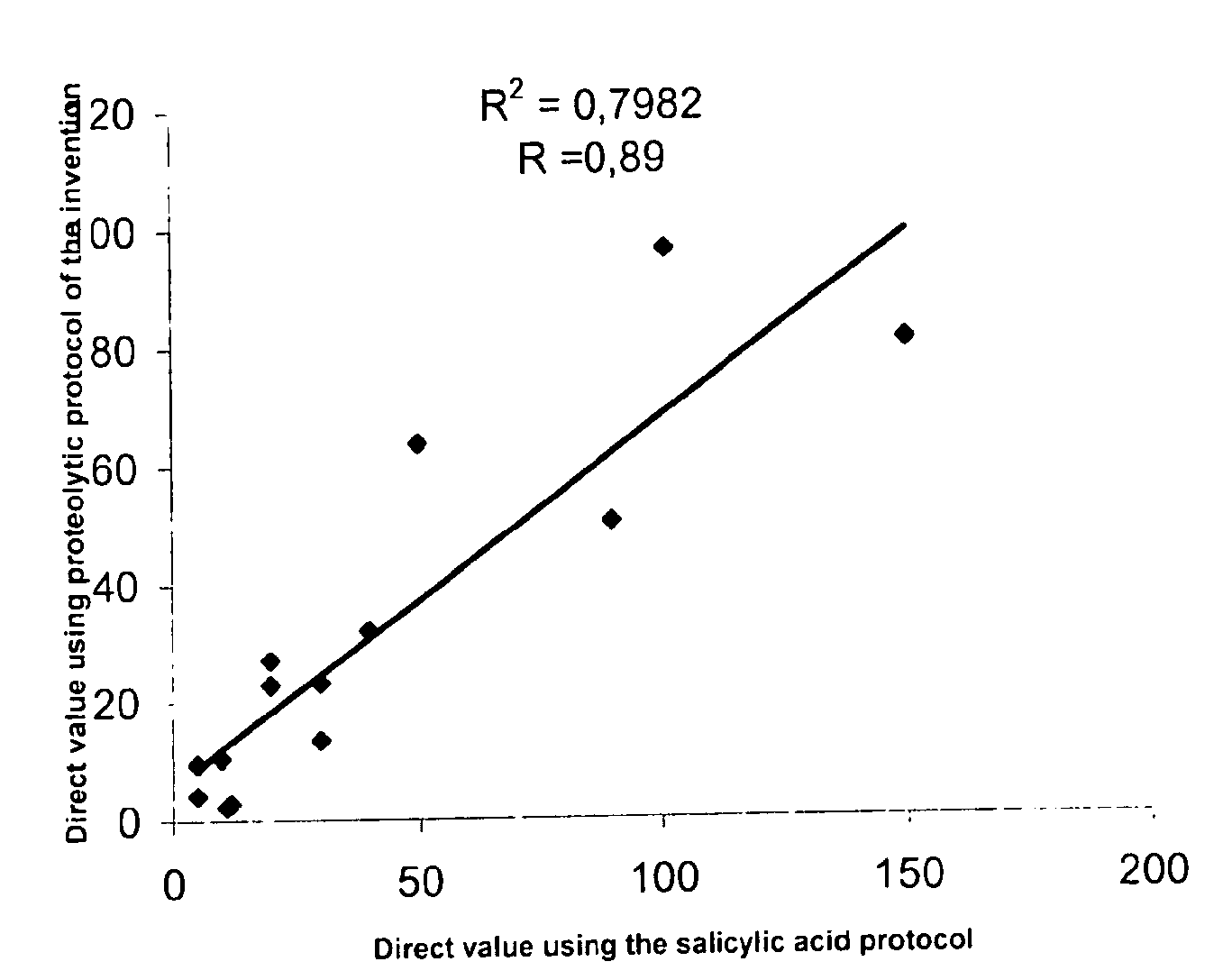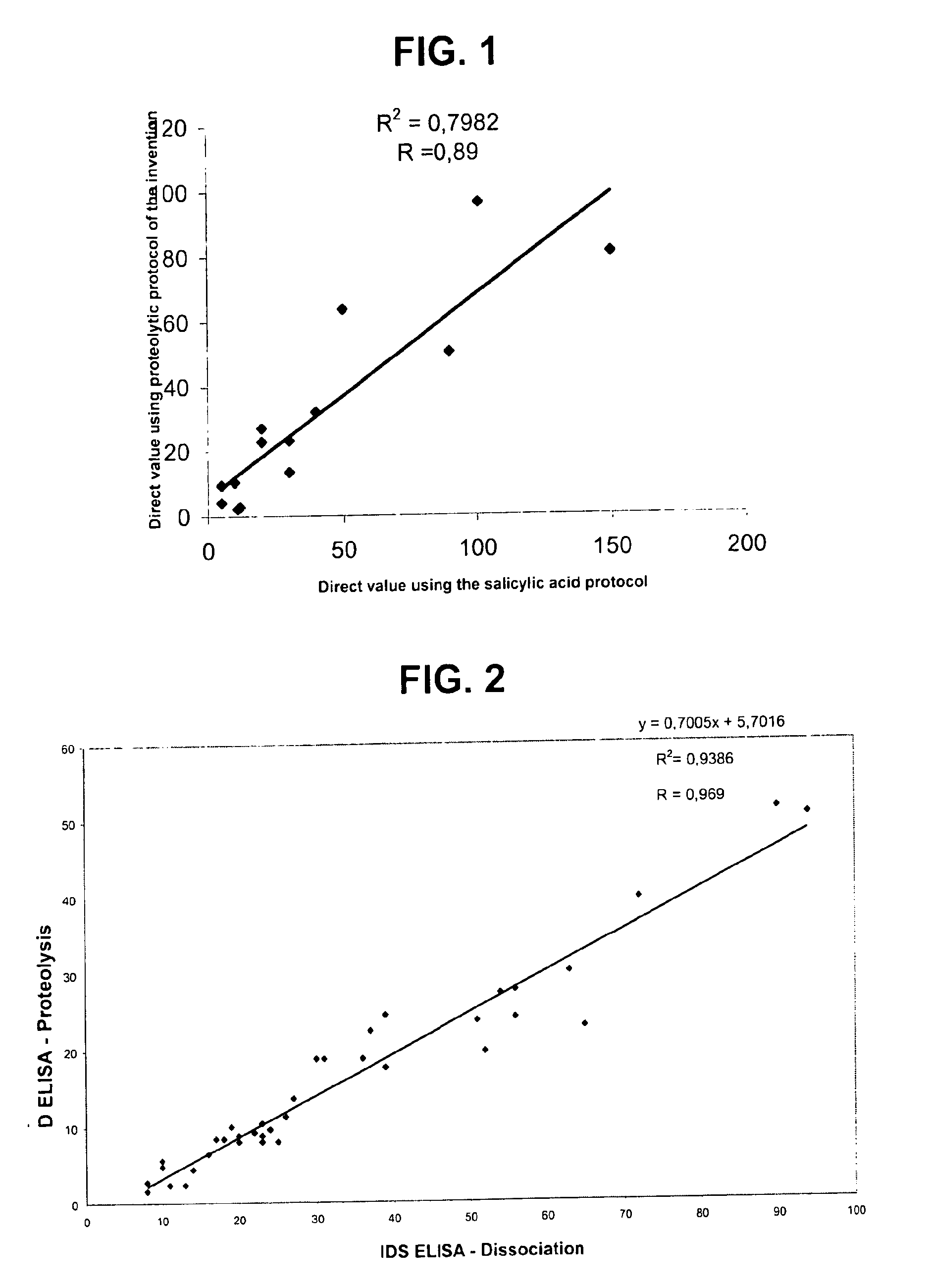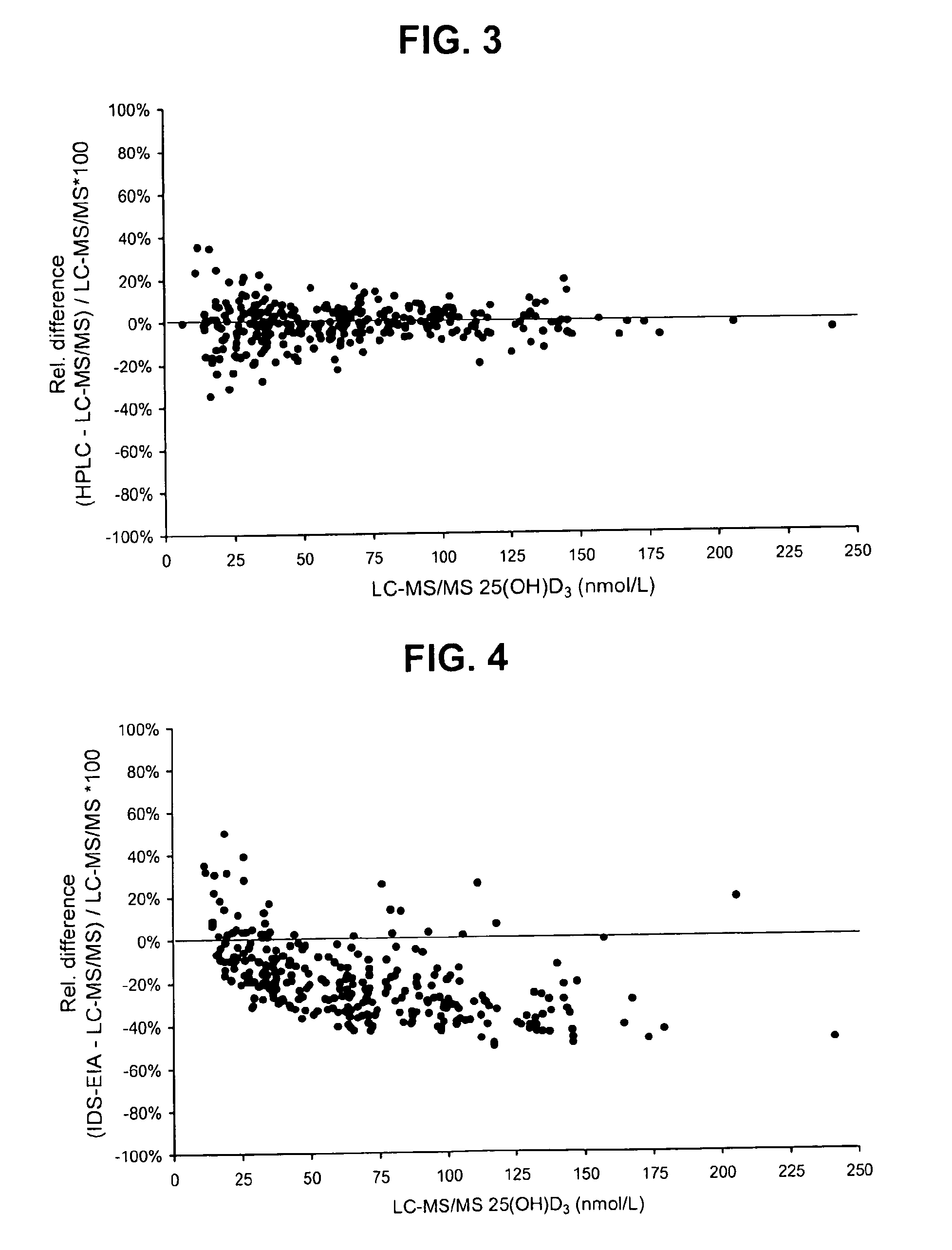Direct determination of vitamin D in serum or plasma
a technology of serum or plasma and vitamin d, which is applied in the direction of biochemistry equipment, biochemistry equipment and processes, material testing goods, etc., can solve the problems of laborious sample preparation methods, laborious lab techniques, and easy errors in sample preparation methods mentioned above, etc., and achieves easy control, easy automation, and extended digestion
- Summary
- Abstract
- Description
- Claims
- Application Information
AI Technical Summary
Benefits of technology
Problems solved by technology
Method used
Image
Examples
example 1
Determination of 25-hydroxyvitamin D in Serum or Plasma
(i) Binding of the Vitamin D Tracers to a Solid Phase
[0036]25-hydroxyvitamin D-3β-3-[6-N-(biotinyl)hexamido]amidopropylether was coupled to a solid phase via streptavidin. For this, portions of 100 ng streptavidin were first introduced into the cavities of a microtiter plate, dissolved in 200 μL 60 mM sodium bicarbonate at pH 9.6, and the plate was incubated overnight at 4° C. The streptavidin solutions were then removed and the cavities were washed 5 times with 200 μL washing buffer solution (50 mmol / L phosphate buffer, pH 6.0, 0.05% Tween-20). Next, 250 μL block buffer (phosphate buffer, pH 6.0 with 0.5% casein, 1% gelatin, 1% thimerosal) was filled into each cavity, incubated for 1 hour and then removed, and then each cavity was washed again 5 times with 200 μL washing buffer. Then, 10 ng 25-biotin-hydroxyvitamin D in 200 μL washing buffer was introduced into each of the cavities, incubated over night in the dark under shakin...
example 2
Analytical Sensitivity of the Proteolytic Testing System According to the Invention
[0042]For the determination of the detection limit of the testing system according to the invention, the competition binding and measurement was essentially carried out as in Example 1, except that the sample contained no or defined standard amounts of vitamin D metabolite. The results are shown in the table I below.
[0043]
TABLE IDetection limit of 25-hydroxyvitamin D in a proteolytic systemOptical Density of the standardSample with 0 nmol Vit.D / LCalibration curve40xOD 1OD2Standard nmol / L1.3881.4241.4421.37401.4381.3761.1721.1966.41.461.3760.9880.871161.3691.4090.630.554401.5041.4630.3730.3121001.4181.3390.2690.252501.3961.341.4761.4011.371.3181.4241.4491.5541.361.3541.3731.4041.3921.3861.4131.4211.3981.481.4391.3821.431.3661.4111.3281.4691.4151.476
[0044]The mean OD for the blank sample was 1.41, with a standard deviation of 0.05 OD. The detection limit of 25-hydroxyvitamin D was only 2 nmol / L, which i...
example 3
Reproducibility of the Proteolytic System
[0045]The correspondence between the independent measurements for the proteolytic system 1 was determined. The precision results from the standard deviation and the relative standard deviations (the variation coefficients) between the discrete values and the mean. A standard serum sample was used as a positive reference sample. The mean concentration was 41.4 nmol 25-OH-Vit.D / L. For the remaining values, the determined detection limit were used. The results for the serum sample are shown in Table II.
[0046]
TABLE IIIntra-assay variance of the proteolytic methodCalibration curves1 Sample, 20 runs:OD1OD2Standard nmol / L1.4421.3740Mean Optical Density: 0.6221.1961.1726.40.9880.87116Mean Concentration: 41.4 nmol / L0.630.554400.3730.312100Intra-assay variance: 10%0.2690.25250
[0047]The precision between separate analysis series (inter-assays) represents the variations of one or more known and unknown factors. To achieve this, the above sample was prepa...
PUM
| Property | Measurement | Unit |
|---|---|---|
| concentration | aaaaa | aaaaa |
| concentration | aaaaa | aaaaa |
| concentration | aaaaa | aaaaa |
Abstract
Description
Claims
Application Information
 Login to View More
Login to View More - R&D
- Intellectual Property
- Life Sciences
- Materials
- Tech Scout
- Unparalleled Data Quality
- Higher Quality Content
- 60% Fewer Hallucinations
Browse by: Latest US Patents, China's latest patents, Technical Efficacy Thesaurus, Application Domain, Technology Topic, Popular Technical Reports.
© 2025 PatSnap. All rights reserved.Legal|Privacy policy|Modern Slavery Act Transparency Statement|Sitemap|About US| Contact US: help@patsnap.com



